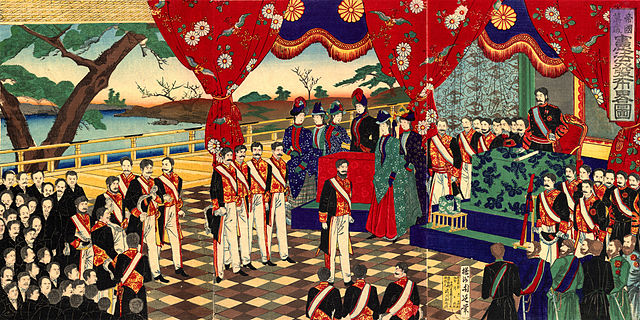The law of Japan refers to the legal system in Japan, which is primarily based on legal codes and statutes, with precedents also playing an important role. Japan has a civil law legal system with six legal codes, which were greatly influenced by Germany, to a lesser extent by France, and also adapted to Japanese circumstances. The Japanese Constitution enacted after World War II is the supreme law in Japan. An independent judiciary has the power to review laws and government acts for constitutionality.
The Daigokuden, the main building to Heijo Palace, which was an imperial palace modeled after Tang China palaces in the Nara period
Edo Castle with surrounding residential palaces and moats, from a 17th-century screen painting
Meiji Constitution promulgation by Toyohara Chikanobu
Establishment of the Imperial Rule Assistance Association in 1940
The Taika Reforms were a set of doctrines established by Emperor Kōtoku in the year 645. They were written shortly after the death of Prince Shōtoku and the defeat of the Soga clan, uniting Japan. The reforms also artistically marked the end of the Asuka period and the beginning of the Hakuhō period. Crown Prince Naka no Ōe, Nakatomi no Kamatari, and Emperor Kōtoku jointly embarked on the details of the Reforms. Emperor Kōtoku then announced the era of "Taika" (大化), or "Great Reform".
Isshi Incident





